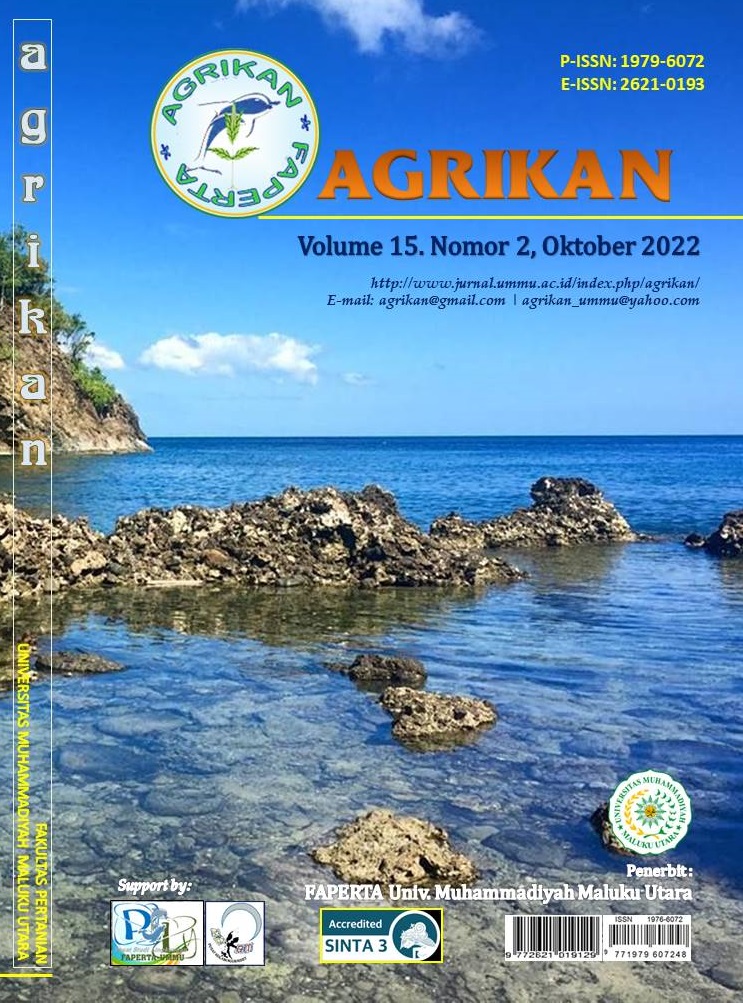Biodiversity and Daily Distribution of Iktiofauna in Seagrass Habitats: Relation to Other Habitats in the coastal waters of Wamsisi Village, Buru Island – Maluku
DOI:
https://doi.org/10.52046/agrikan.v15i2.1257Keywords:
Frequency of Presence, Species Similarity, Species Composition, Structure of CommunityAbstract
This study aims to compare the biodiversity of ichthyofauna in seagrass meadows between the day and night periods. The study was conducted in July 2019 on seagrass habitats in the coastal waters of Wamsisi village, Buru Island, Maluku. Fish samples were collected using battom gill nets placed on seagrass meadows during the day and night periods. Data analysis includes species composition, community structure (dominance index, diversity, and uniformity), frequency of presence, and grouping similarity of fish species using the Bray-Curtis Index, which is displayed in the form of tables and dendrograms. The results obtained as many as 72 individuals, 34 species from 14 families, and 4 orders. The species composition and the highest frequency of presence were Naso hexacanthus (Acanthuridae) during the day, Caesio caerulaurea (Caesionidae), and Lutjanus gibbus (Lutjanidae) at night, diversity and equitability indexes were in the high category, whereas the dominance index was in a low category. Based on the life phase, the ichthyofauna was dominated by the pre-adult of 17 species (50,0%), adult of 12 species (35,3%), and yuwana phase of 5 species (14.7%). The similarity of species between the day and night periods is categorized as low in value, which means the presence of fish species is different between the day and night periods.
Downloads
Published
Issue
Section
License
Copyright (c) 2022 Husain Latuconsina, Wardi Marasabessy, Hamdani Dwi Prasetyo, Neri Kautsari

This work is licensed under a Creative Commons Attribution 4.0 International License.

This work is licensed under a Creative Commons Attribution 4.0 International License.













